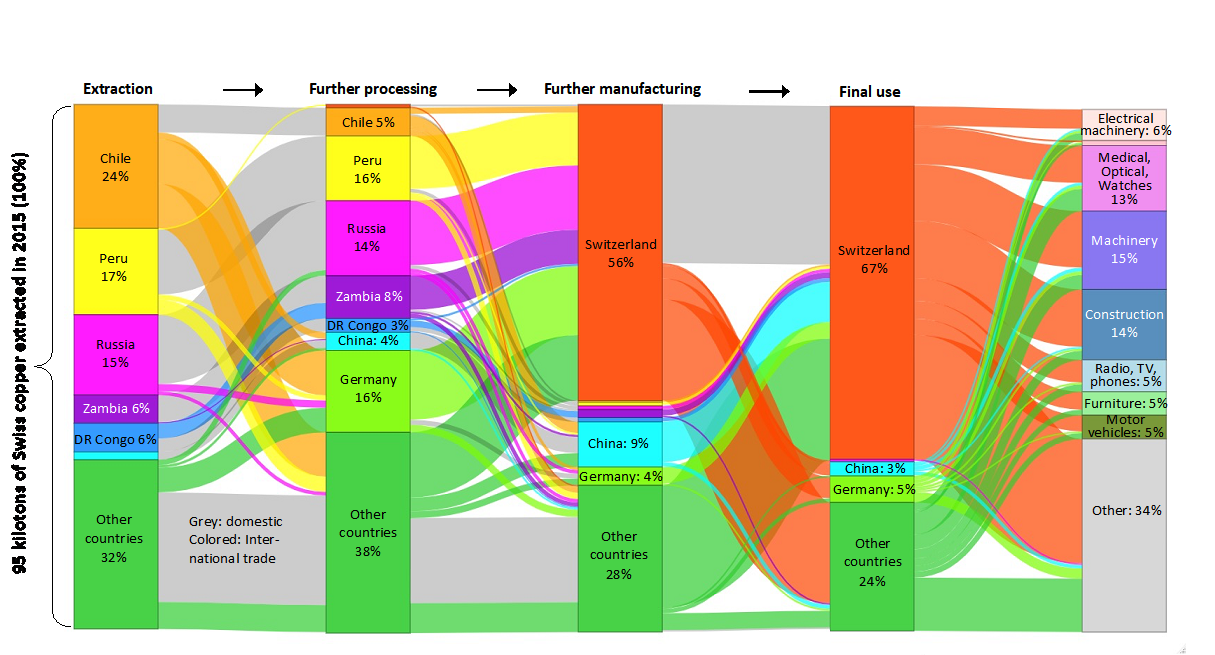Supply Chain Analysis

Supply chains of metals are both complex and intransparent. Thus, little is known on the origin of metals traded or used by Switzerland. However, this precise information would create the framework for an efficient reduction of the environmental footprint of Swiss metals. Thus, we will try to answer questions like:
- Where on the globe were Swiss metals originally mined?
- Can we identify major pathways in the supply chain?
The team
-

Livia Cabernard (© 2017 ISTP) -

Stephan Pfister -

Désirée Ruppen (ETH Zürich / Giulia Marthaler)
We investigate these questions for two categories of Swiss metals:
- Swiss metals inside Swiss borders includes copper, and gold that enter or cross Swiss borders by various commodities and that are then either consumed or further processed and exported again. Here, we do not only include copper compounds (e.g. copper wires used for construction) but also the “hidden” copper (e.g. copper in mobile phones).
- Swiss metals outside Swiss borders include copper, and gold that is mined or traded by Swiss companies abroad. Swiss companies are defined as companies with its headquarter in Switzerland but mining or trading activity all over the globe.
We approach our research questions by multiregional input-output analysis (MRIO). In MRIO, we weigh mining data on metal extraction by average coefficients to estimate their shares in commodities. Combining these shares with trade data allows us to track the metals through the global network. By this, we can trace Swiss metals back to the countries where they were originally mined and processed.
